Clematis "Multi Blue": features, tips for growing and breeding
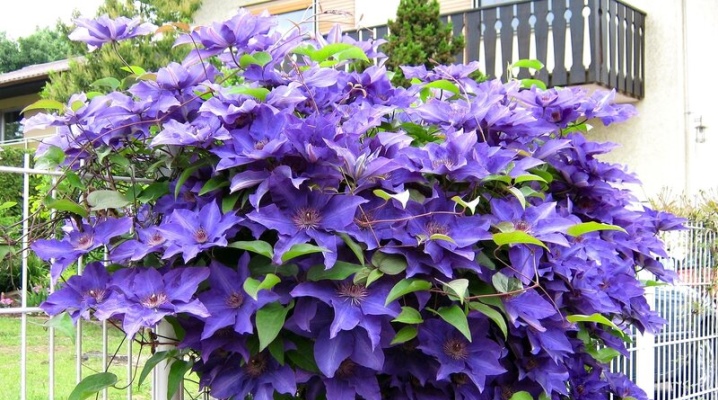
Clematis "Multi Blue" (lat. Multi blue) gives the impression of a splendid flowering and rather large, bright blue flowers with a purple tint. This large-flowered variety was bred in 1983 by breeders from Holland and immediately gained widespread popularity around the world. It is also successfully grown in Russia. After 30 years, about 190 more large-flowered varieties of clematis were bred.
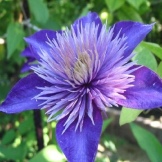
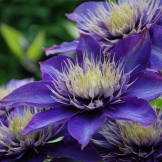
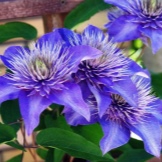
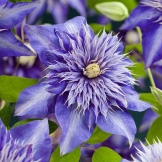
Description of the variety
Clematis "Multi Blue" - blooming liana, with which you can originally decorate a personal plot, terrace or balcony. Basically, gardeners prefer perennial large-flowered varieties of clematis, which include "Multi Blue". Flowers have gained such wide popularity due to their chic decorative appearance, abundant flowering and their unpretentious care.
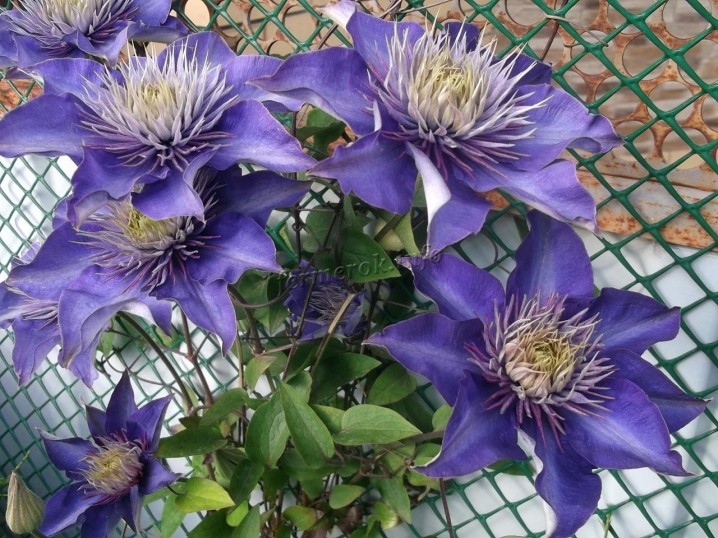
The variety "Multi Blue" is included in the Patens group and was bred on the basis of the variety "Raskidisty"... It is characterized by the formation of flowers not only on last year's shoots, but also on newly appeared ones. With proper care, hybrid clematis re-blooms, which can occur towards the end of summer. A distinctive feature is strong variability, since flowers of the same variety can be different in shape and have differences in shade.

The main features of the variety.
- "Multi Blue" is a bushy vine. During the year, the branches grow about 2 meters. However, in the case of growing in a flower pot, the height of the plant is 20-40 cm.
- Annual shoots are thin flexible vines of a dark brown hue. With age, the branches begin to lignify, but do not lose their elasticity and cling well to the support.
- Possesses a powerful branched root system. Unlike other varieties of clematis, the roots of "Multi Blue" are very close under the soil surface. For this reason, experts do not recommend loosening the soil directly under the Multi Blue clematis bushes, as this can lead to the death of the plant. It is better to replace loosening the soil with mulching the soil under the bushes and in the immediate vicinity.
- The leaf plate is oblong, rather large and reaches 10 cm in length. The leaves are dark olive green.
- Flowering is characterized as early and long lasting. It starts from early or mid-May and lasts until the end of August, and in warm weather and the absence of frost, flowering can continue in September.
- Flowers can be of different colors: from blue-violet with a bluish tint to pink with a white border. Flowers appear mainly on last year's shoots, up to 18 cm in diameter. Inflorescences consist of 4-8 oblong double petals arranged in two circles. The upper petals are predominantly rounded-oblong with sharp tips. They are short and vertical. The lower petals are flatter and larger. Petals of different shapes give the flower originality. The short petals, shaped like a lancet or needles, are positioned vertically upward. In the center of the flower there are stamens of yellow, red, light green or white. The color depends on the stage of formation and opening of the bud.
- With proper care, a clematis bush can grow in one place for up to 20 years.
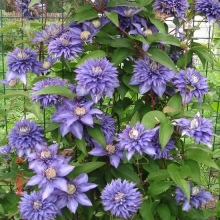
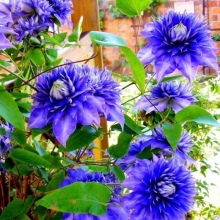
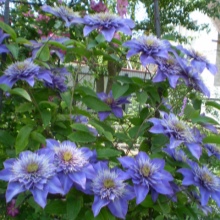
Landing
Clematis "Multi Blue" are quite unpretentious, but when planting them in open ground, you should adhere to certain rules.Their violation often leads to the occurrence of various diseases in plants and a meager and short flowering.
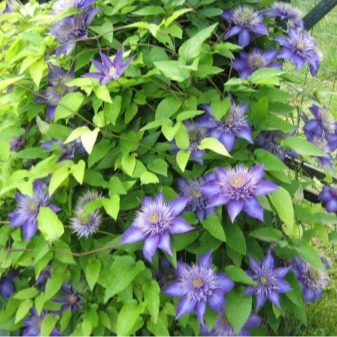

Recommended boarding time
It is recommended to plant clematis in the spring, it is necessary to have time to plant before the buds of the plant begin to swell. When buying clematis already with blossoming foliage, it is not necessary to wait for spring. You can land it in the summer. Their roots must be closed.
Planting in the autumn is possible only in the southern territories. When cultivated in the Middle Lane, a fragile seedling does not have time to root well and will not withstand winter frosts.

Choosing the best location
Heat-loving clematis grows well in one place for a long time. Accordingly, the place for it must be chosen permanent. It must necessarily be moderately sunny, the presence of drafts is unacceptable.
It is not recommended to plant the plant in a place where water stagnates. The roots that are not located at a depth quickly rot, excess moisture also contributes to the development of various diseases.
When grown in the southern regions, the bushes should be shaded from the bright sun, since under its influence the flowers fade and the plant loses its gorgeous appearance.
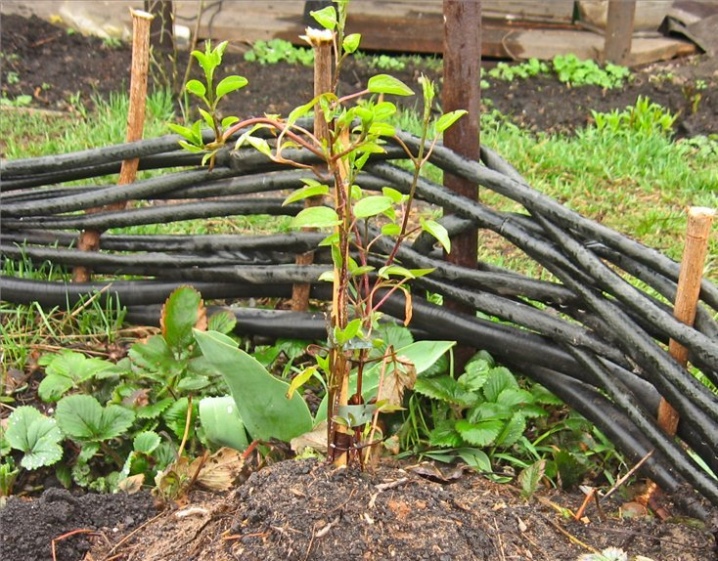
Selection and preparation of seedlings
Experienced gardeners recommend purchasing seedlings at the age of two. Their main advantage is a strengthened, overgrown root system 10-15 cm long.You should choose seedlings, grown in the region of planned growth. Annual seedlings grown in Holland or Poland take root less well. They bloom more poorly at first, and they begin to bloom later.
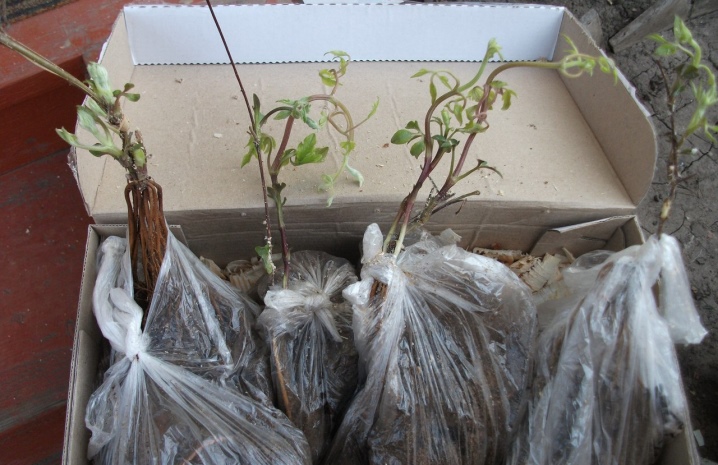
When choosing seedlings with open roots, it is recommended to choose specimens that have more dormant buds. The roots should be predominantly uniform in thickness, without foci of rot and various damage.
Important! If the seedlings are bought in a container, right before planting in the ground, they are placed in warm water for a few minutes.

Planting rules and general recommendations for gardeners.
- In the case when a fence, a gazebo or a building wall is selected for support under clematis, it is recommended to indent about 1 meter from them.
- Pits for a seedling are dug 60x60 cm in size, 50 cm deep. So that the bushes do not clog each other and do not interfere with growth, a distance of about a meter should be left between them.
- A 15 cm layer of drainage is poured into the bottom of the pit, which can be crushed stone or broken brick. On top of the drainage, a small hill is formed of earth mixed with humus and ash.
- In places with possible accumulation of water, in order to avoid stagnation of moisture at the base of the seedling, a layer of sand is laid between the drainage layer and the ground. The buds buried in the ground on the seedling will die off, and in their place, over time, a tillering center will form.
- The plant must be placed in the center of the hole and the roots spread out.
- The root collar must be deepened by 8 cm.
- After planting is complete, the soil is tamped and watered thoroughly.
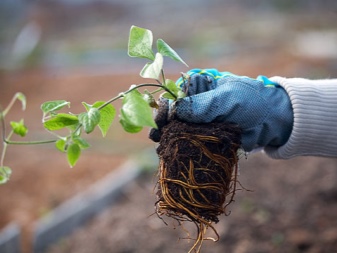

Growing from seeds
Growing clematis from seeds is a laborious process, in which it is important to follow the sequence:
- the seeds are immersed in water for 2 days;
- the seeds are transferred to a container with earth mixed with sand;
- the container is covered with a transparent film and left in a bright place for germination.
It should be noted that when growing Clematis "Multi Blue" from seeds, hereditary traits may not be transmitted.
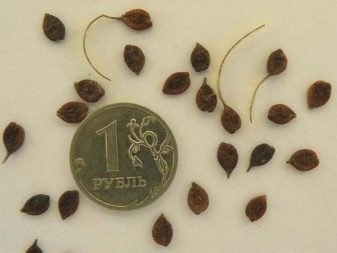
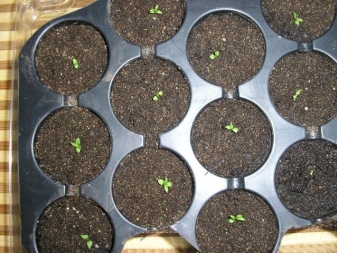
Care
This variety of clematis is quite unpretentious. The complex of works for the care of clematis includes:
- watering;
- top dressing;
- mulching;
- pruning;
- preparing the plant for wintering.
Watering clematis should be 1-2 times a week, the frequency of watering depends on the weather conditions. During particularly hot periods, the plant needs to be watered more often and more abundantly. In the rainy period, watering clematis ceases. To prevent excessive evaporation of moisture, the ground under the bushes is mulched. It is important to remember that you cannot loosen the soil under the Multi Blue bushes, as this can damage the roots.
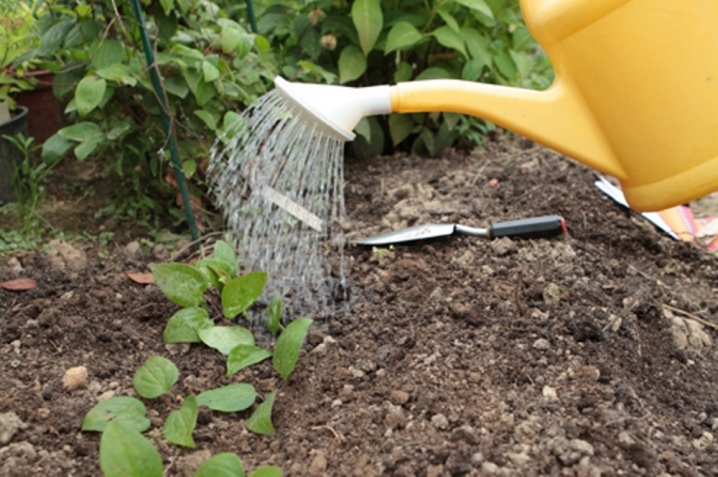
This variety does not like frequent feeding. The plant is usually fed 2 times a year. The first feeding is done with nitrogen fertilization during the period of active growth of young shoots. The second feeding is done in the autumn. Phosphate-potassium fertilizer helps to strengthen the root system, which helps the plant to withstand winter weather conditions.
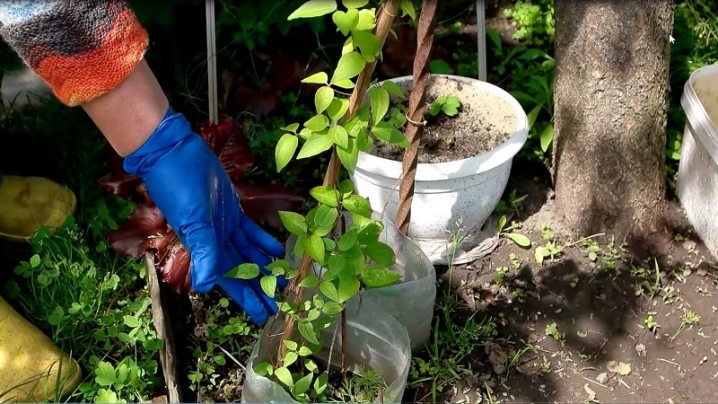
Organic food can be prepared on your own from improvised means. To do this, water is poured into the barrel, weeds and a small amount of manure are added. The mixture is left for several weeks for the fermentation process to take place.
After the time has elapsed, the organic fertilizer is ready and suitable for use.
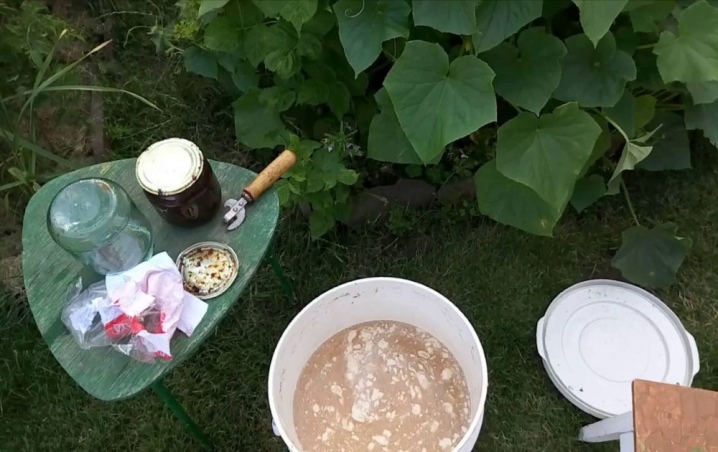
Mulching the soil under the bushes should be done without fail. This procedure helps to reduce moisture evaporation and protects the root system from drying out and overheating. In addition, there are fewer weeds in areas covered with mulch.
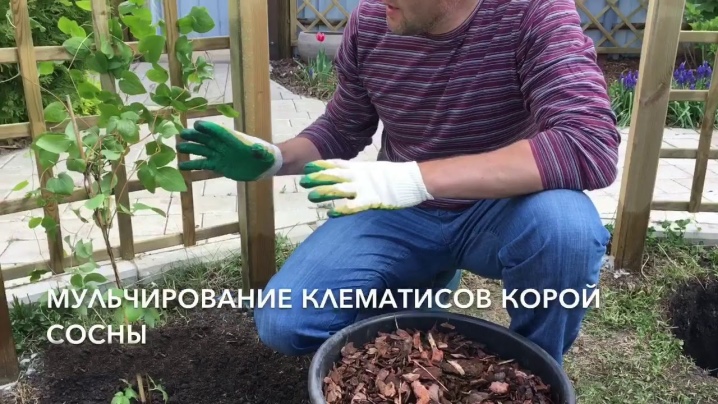
As you know, the flowers of clematis of this variety are formed both on new and last year's shoots, therefore, before the beginning of winter, the liana is cut off, while leaving them up to 1-1.2 m long.In the spring, leaves of a rich green color begin to bloom on them and are formed first buds. After the completion of the first wave of flowering, old shoots should be cut off by 20-30 cm.
By this time, the first buds are usually formed on young shoots, giving rise to the next wave of flowering.
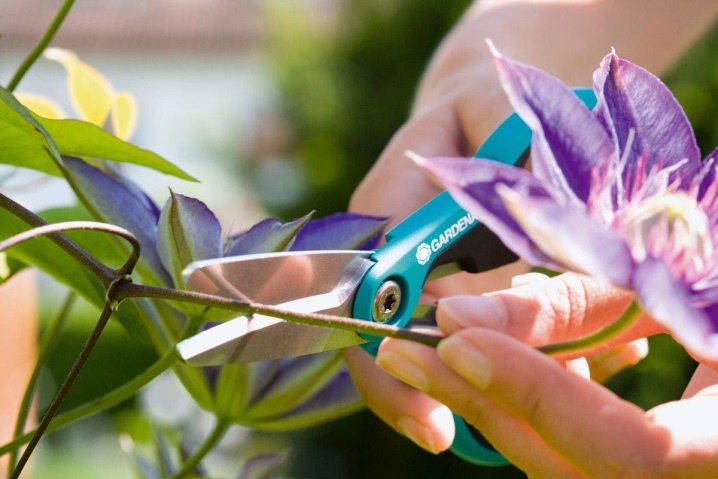
It is important not to forget to install supports for which the vine will hold onto, and also rush up along them.... Trees, walls, arcs with a height of 2.5 m can be used as a support. Initially, the vines will need to be tied up and independently guided along the support in the desired direction.
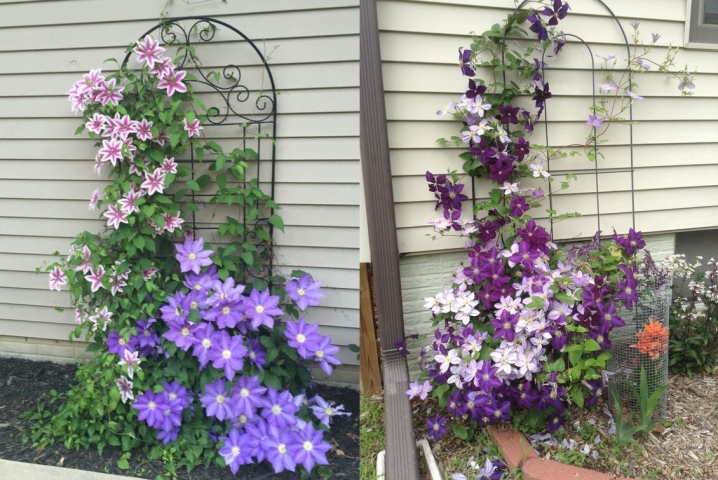
When planting clematis near metal fences, you should step back at least a meter from them. The fact is that in especially hot periods, the heat from the metal can help dry out the bush.

Excess moisture can destroy the plant, so it is imperative to make good drainage. Given that the roots of clematis spread immediately below the soil surface, it is not recommended to plant the bush near the foundation and other hard surfaces.
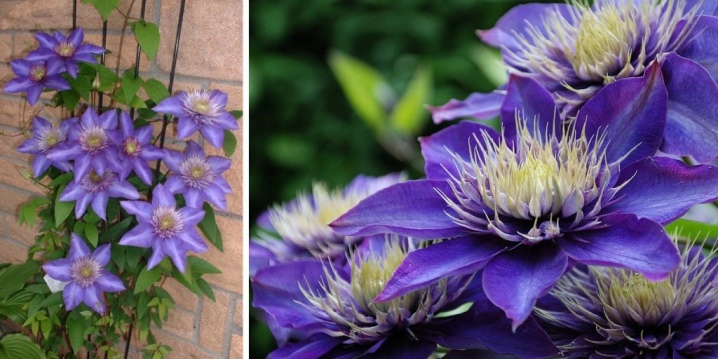
Disease and pest control
The "Multi Blue" variety has developed a stable immunity to viral diseases. At the same time, non-observance of the elementary rules of care can lead to the development of the following diseases.
- Rust - characterized by the appearance of orange spots on the leaves.
- Gray rot - the development of the disease is most likely in a rainy summer. Under the influence of the disease, brown spots with a gray bloom appear on the petals.
- Powdery mildew if untreated, it can lead to the death of parts of the plant or even the entire bush. It can be recognized by its characteristic white coating on leaves, buds and flowers.
- Wilt - considered the most dangerous fungal disease. The causative agent of the disease through the soil penetrates into all plant tissues and leads to blockage of blood vessels. Wilt leads to the death of the plant.
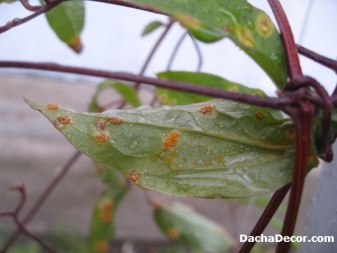
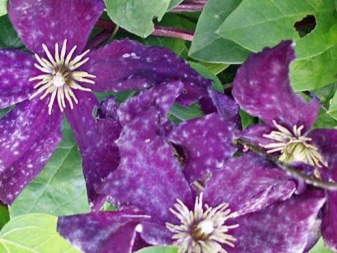
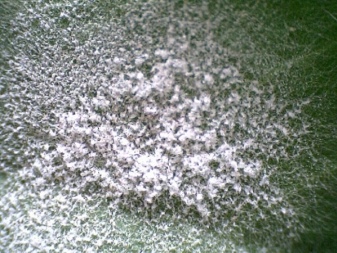
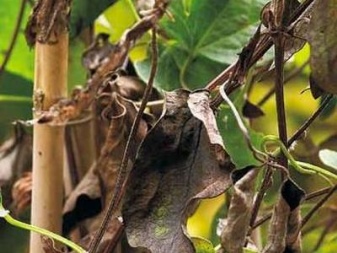
As a treatment, the most effective is spraying the affected bushes with fungicides.
Preventive measures to reduce the risk of disease:
- regular weeding, weed removal;
- systematic moderate watering;
- pruning diseased shoots.
To repel insect pests, experienced flower growers recommend planting calendula, marigold or nasturtium next to clematis bushes.
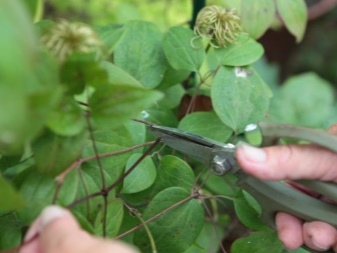
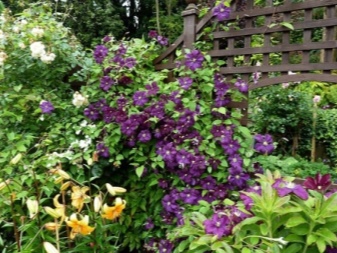
Pruning rules
The variety "Multi Blue" refers to to the second trimming group. It means that flowers bloom not only on young shoots, but also on last year's ones. Clematis pruning must be done 2 times per year.
The first pruning is done after the end of the first wave of flowering. Those parts of the old stems on which the flowers have bloomed should be cut off.At the end of the second flowering, when preparing the bushes for the winter period, a second pruning is performed. The remaining parts of the old stems are cut off completely, and the young vines are only shortened, cutting off the faded part. The rest of the shoots are bent down and covered according to all the rules. The buds remaining on them should give flowers in spring.

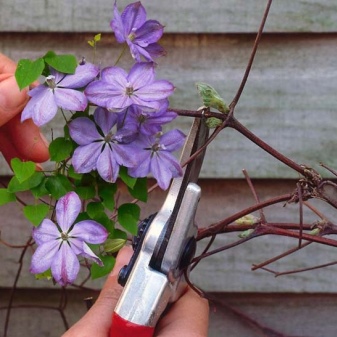
Preparing for winter
In preparation for the winter period, the vine must be cut off almost completely, leaving only 40 cm of the stem. In order to avoid the accumulation of moisture in the root system in winter and spring, clematis bushes must be properly prepared for wintering. For this, mulching is used.
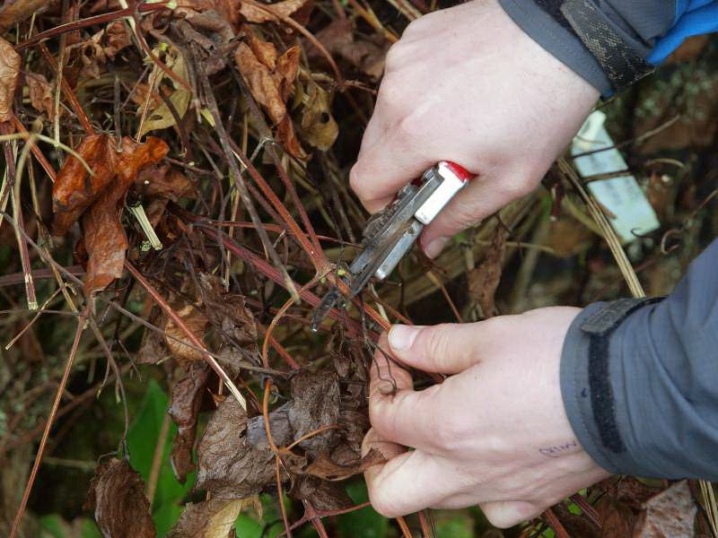
Better to lay a thick layer of mulch, about 15-18 cm.
If the winters in the region are harsh, then the mulch can be additionally sprinkled with peat. Spruce branches are laid on top of it to prevent waterlogging of the soil. The shoots must be carefully rolled into a ring and laid on the branches. Then the branches are again covered with a layer of coniferous branches and covered with non-woven material. Covering clematis is best on a dry and slightly frosty day.
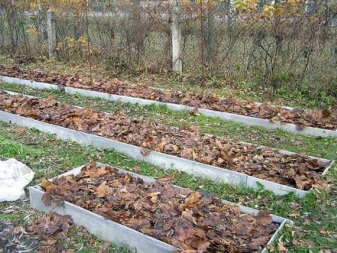

Gardeners recommend opening the bushes gradually in the spring. The mulch and spruce branches are removed layer by layer: first one, and after 5 days the next. So clematis will be able to gradually recover after wintering. It is necessary to completely free the clematis bushes from shelter only when frost is no longer threatened. Wherein do not leave flowers under cover for an unnecessarily long time to avoid debate.
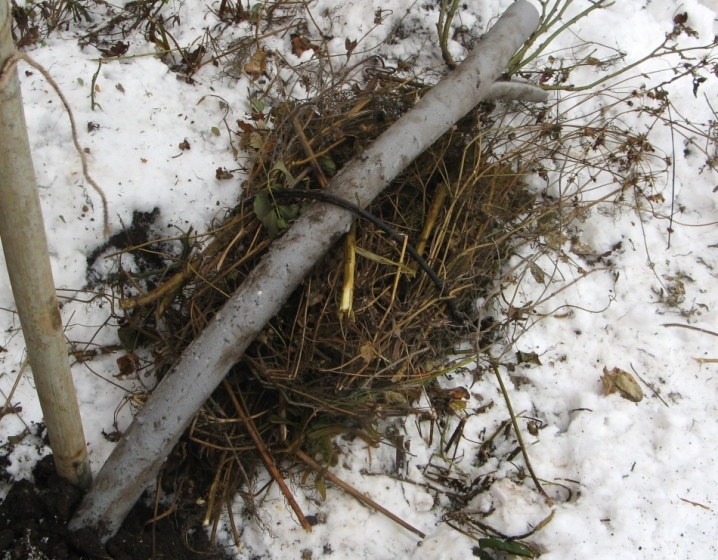
How to reproduce?
Clematis "Multi Blue" reproduces in the following ways.
Seeds
You should buy seeds only in special stores. Experts do not recommend growing clematis from seeds harvested by their own hands, since it is not known which of the qualities will pass to the new plant and what the result will be.
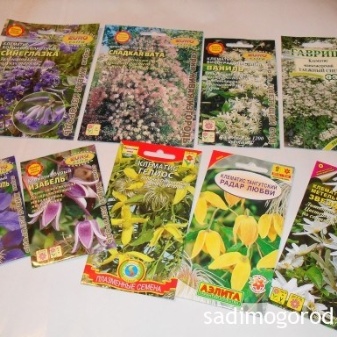
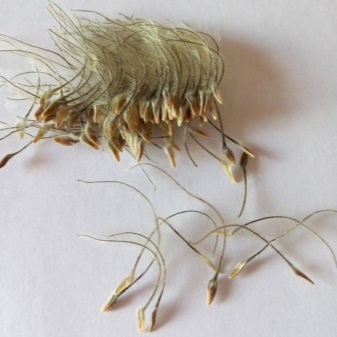
Dividing the bush
To do this, you need to choose a large and healthy clematis bush, divide it into several parts. You can also do without digging. You should carefully dig in the bush on one side and separate part of the bush. The separated part must be planted in the same way as an adult plant.
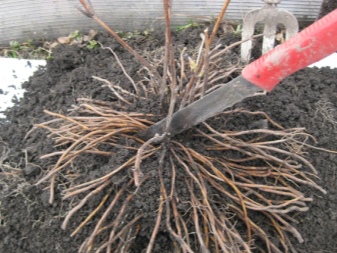
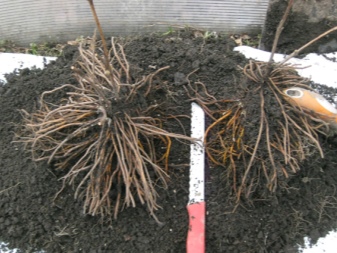
Cuttings
This method is the most effective. The vine should be cut into several cuttings, so that each has 2-3 internodes. It is recommended to treat the lower part of the cuttings with the "Kornevin" composition and plant them in specially prepared boxes with soil for rooting.

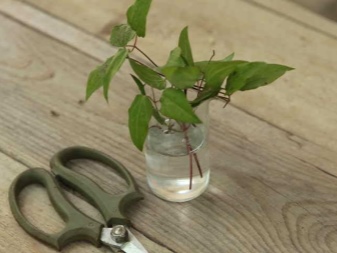
Layers
In the spring, the shoot should be planted in a groove 5-7 cm deep, dug out in advance in the direction "from the bush", and pinned, and then covered with soil. After rooting, small shoots will appear, which will need to be carefully separated and planted in a permanent place.
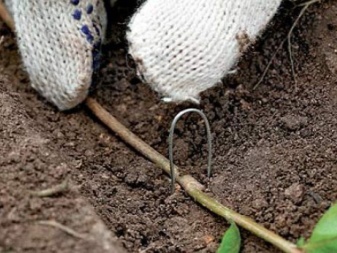
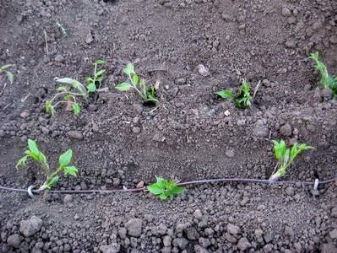
Examples in landscape design
Clematis "Multi Blue" is an elegant bright plant that is often used by designers to decorate the adjoining territory of a summer cottage. Landscape designers use it for horizontal and vertical landscaping.


Review of clematis "Multi Blue" in the video.







































































































The comment was sent successfully.